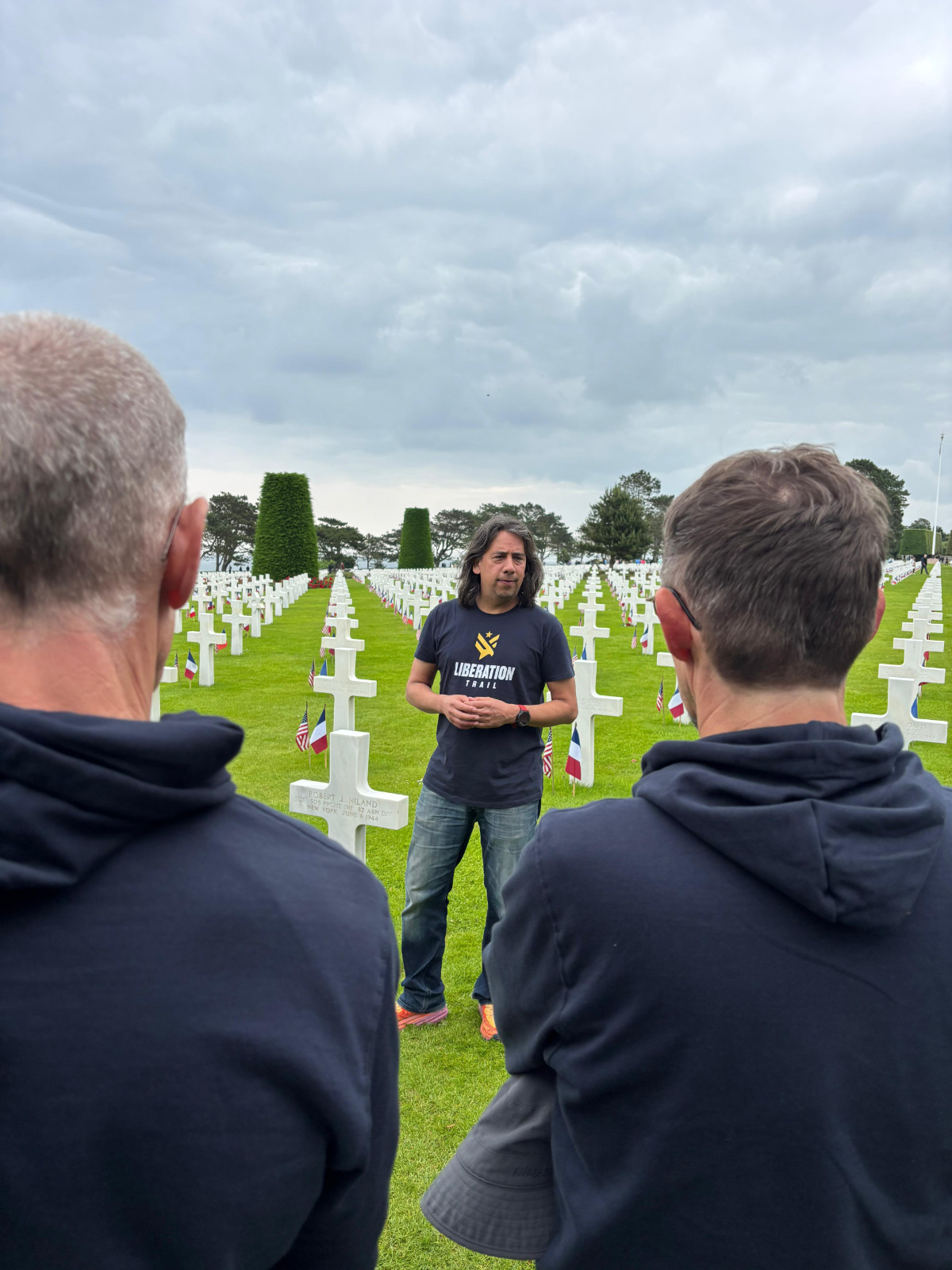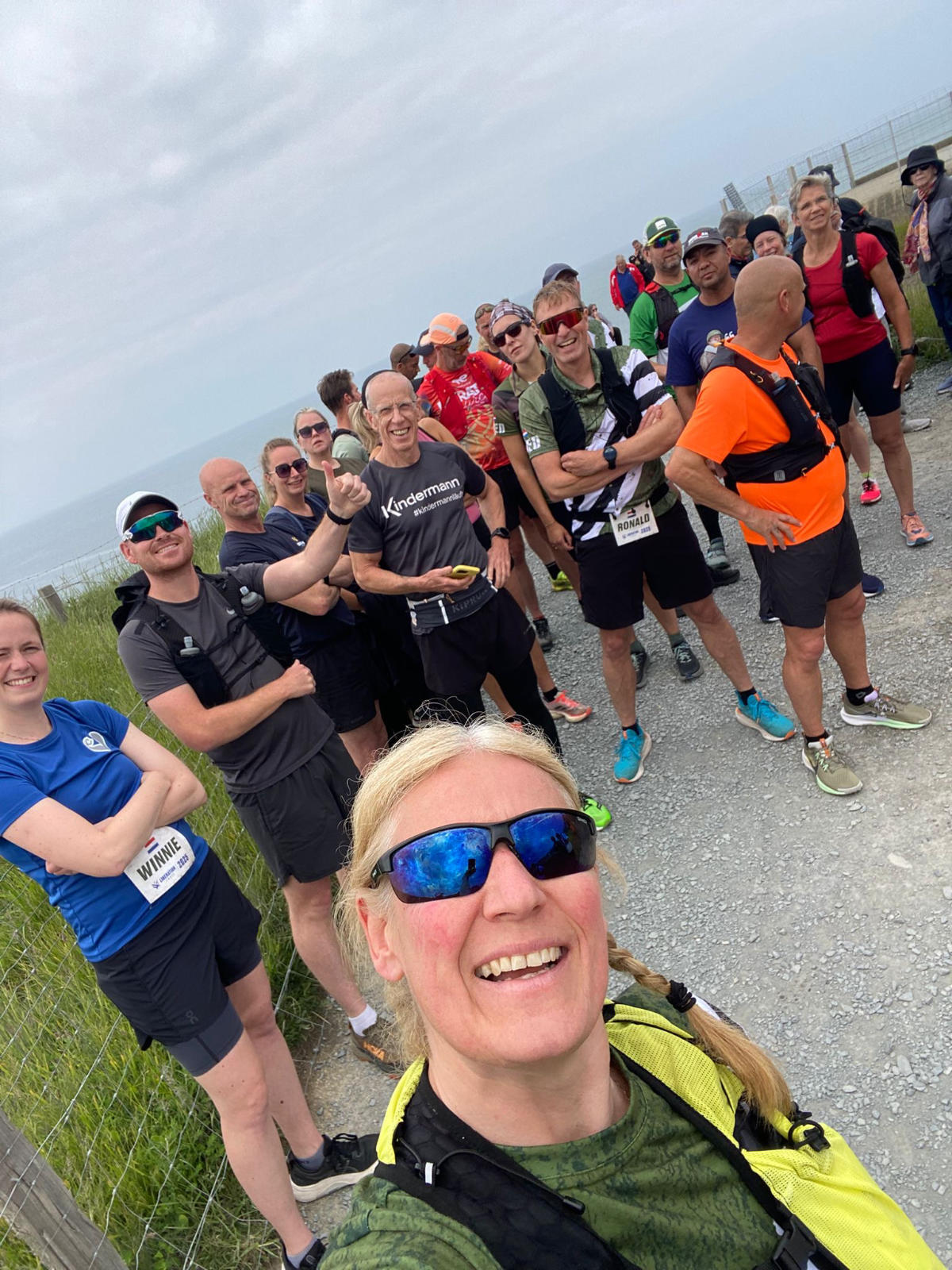
PROLOGUE 2025
“One name. One cross. One family. One story. Now multiply that by 10,000.”
You stand on a windswept cliff above Omaha Beach. The sea is calm, but your thoughts are not. You picture it—June 6, 1944. Chaos. Fear. Bravery. The beginning of the end of a world war.
As we began the first stage of the Liberation Trail, we paused to reflect.
👉 First at the American Cemetery at Colleville-sur-Mer, where 10,000 white crosses mark the cost of freedom.
👉 Then at La Cambe, the German war cemetery—equally powerful in its stark, silent humility.
Among the names etched in stone lie two brothers: Preston and Robert Niland. Their story became legendary—though many never knew their names. Until now.
⸻
The Niland Brothers – The Real Story Behind Saving Private Ryan
“The loss of your brothers… is a burden I cannot imagine.”
With those words, Captain Miller begins his mission in Saving Private Ryan, the Academy Award-winning war film that brought the human cost of D-Day to the world’s attention. But the inspiration behind Private James Francis Ryan came from a very real family: the Niland brothers of Tonawanda, New York.
Four Brothers, One War
Edward, Preston, Robert, and Frederick “Fritz” Niland all served during World War II. Like countless American families, the Nilands gave everything to the war effort. But the price they paid would ripple through military policy—and eventually through Hollywood.
On June 6, 1944, two brothers died in combat:
– Preston, with the 4th Infantry, was killed storming Utah Beach.
– Robert, of the 82nd Airborne, fell near Neuville-au-Plain.
A third brother, Edward, had been shot down over Burma and was presumed dead.
That left just one: Fritz, serving with the 101st Airborne. When the War Department realized he was the sole surviving brother, they pulled him out of combat and sent him back to the U.S.—a direct result of what would become known as the Sole Survivor Policy.
The Real-Life Ryan
In Saving Private Ryan, a small team of Rangers risk their lives to find and bring home the last surviving brother. The film’s central dilemma—saving one life at great cost—is fictional, but the sentiment is real.
Fritz Niland wasn’t rescued by a team of soldiers, but he was pulled from the battlefield. He survived the war and lived a long life, never seeking fame or recognition. His story only came to light years later, when screenwriter Robert Rodat and director Steven Spielberg used it as the emotional foundation for one of the most unforgettable war films ever made.
Remembering Them on the Liberation Trail
During the Liberation Trail, we visit the very grounds where history was written in blood and sacrifice. At the American Cemetery, both Preston and Robert Niland lie buried—two white crosses, just rows apart, among thousands.
Visitors often fall silent here—not just because of the vast number of graves, but because of the stories behind them. The Niland brothers’ story reminds us that the cost of war is not measured in battles, but in families, in names, in lives cut short.
⸻
As we run the Liberation Trail, tracing the path of Operation Overlord, we carry more than just a bib number.
We carry memory.
We carry gratitude.
And we carry the stories of those who never made it home.
#LiberationTrail #SavingPrivateRyan #NilandBrothers #WWIIHistory #OmahaBeach #AmericanCemetery #TrailAndMemory #NeverForget #HistoryInMotion #UltraRunning #Normandy

